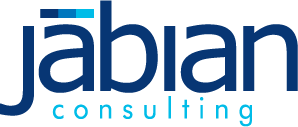By, Tracy Reznik and Eria Mookerjie
Change is happening. In work and at play. Driven by market demands, the latest technology innovation and the new “best” process, leading change is now an everyday responsibility and expectation. So where should leaders start? Erika Mookerjie from Cox Enterprises joins me in sharing three key actions leaders can take to drive effective change: Know the why behind change, build your own resilience, and communicate.
1) Know the ‘why’ behind change.
Create a clear story about WHY a change is happening. The WHY story may sound a little different depending on the audience (e.g., leaders vs. field front-line). Leaders can adjust the WHY story by understanding the WIIFM (What’s In It For Me) and the WAMIs (What’s Against My Interests) of their people. Starting with the WHY before jumping into WHAT and HOW sets the context for the change.
(If you haven’t already heard of Simon Sinek, speaker and author of Start with Why and Leaders Eat Last, check out his TED Talk How Great Leaders Inspire Action. It is an excellent starting point for WHY.)
Leaders can use the WHATs and HOWs as levers to talk about and drive what the organization needs to do and how to do it – but only after addressing the WHY. As a leader, ask yourself this question: If no one does anything differently for this change, what return on investment will the organization get? Often there won’t be a full return without people doing something. To get employees to change – to do something differently – they first need to understand WHY they need to change.
2) Build your own resilience.
Leaders need to model resilience: forgive mistakes and help people learn from them. Leaders also need to show the appropriate level of vulnerability in the face of change. Underlying both actions is the need to demonstrate empathy and build trust. People are at various places all along the change curve at any given time. Effective leaders know where their teams are in processing change and are willing to meet them there. These leaders give their people time and space to move at their own pace toward acceptance of the change. And the really strong leaders understand and acknowledge that often they have had an earlier start in moving through the change process. They are already further along when their employees are just beginning the journey.
Successful change leaders model resiliency because they’ve experienced difficult change themselves. These leaders have diverse experiences in serving others through coaching and mentoring as well as in business operations.
3) Communicate, communicate, communicate. And then do it some more.
Leaders have a responsibility to communicate consistently during good times and bad. Otherwise, the gap in timely communications creates a space for rumors. For example, if you have a quarterly town hall planned, but won’t be ready to share all the details of a change at that time, still hold the town hall and be transparent by sharing what information you can and letting people know when you can tell them more.
Leaders can also avoid unnecessary concern among their employees by communicating via normal channels and with the usual timing for their organization. Creating additional ad hoc approaches that don’t integrate into an overall change plan can misfire and even generate negative results.
Organizations that have a clear strategy to achieve their purpose, or WHY, have a solid foundation for communication. When it’s time to communicate the details of upcoming changes, leaders who have already communicated well about the organization’s strategy can leverage the strategy as context for the changes. Employees will have a clearer sense of how all the pieces fit together. This approach helps leaders avoid surprises with their teams and reduces the risk of appearing fragmented in their approach to leading change.
It’s said so often that it’s become cliché – change is the new normal. And yet this normal is still hard to manage in a day-to-day practical way. Developing a clear vision for why a change is happening (and why it must happen now), building resilience muscles in ourselves and our teams, and communicating well provide the best opportunity to lead the path of change instead of having it catch us by surprise.
